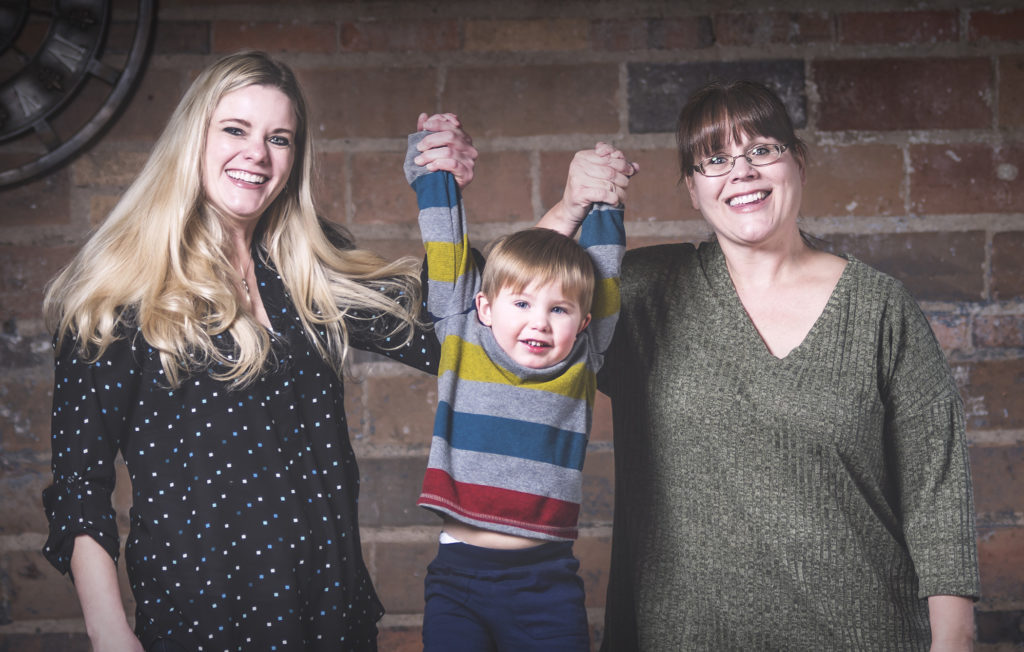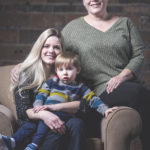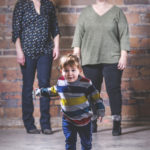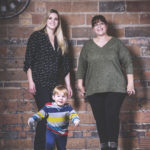Melinda Blankenship was babysitting her then-one-year-old grandson, Chance, when he suddenly began having a seizure, and his lips started turning blue. She immediately called 911, laid him down on the ground, and began doing CPR. He was rushed to the emergency room with a 105 degree fever, when he hadn’t had even a slight fever earlier in the day.
As they would find out, Chance had a febrile seizure. Approximately 2-5% of children experience febrile seizures, and they are the most common form of seizures among children. They are most common in children from six months to three years of age. The seizures occur when the child has a fever (“febrile” actually means to show the symptoms of a fever). While they are scary for both children and their parents, having febrile seizures only indicates a slightly higher risk of developing epilepsy.
The next day, the family went to a pediatrician’s office and learned about the condition.
“The doctor called it a “benign” seizure, which to me seemed like an oxymoron- is there such a thing as a benign seizure? The pediatrician says she sees 2 new cases every week of this. It blew me away that it was so common and I had heard nothing about it. I’ve raised my two children and been around lots of parents, but I had never heard of febrile seizures,” said Melinda.
“The most common and rational approach is based on the epidemiologic data that febrile seizures are by and large benign. Therefore, the only concern is about prolonged febrile seizures,” reads the website of the Child Neurology Foundation.
The doctor warned that he had a chance to have more febrile seizures. His first seizure was a year ago in November 2016, and since then, he has had three other episodes.
“I became very paranoid because I didn’t want Chance to have to go through that again. The first two months after his first episode, I probably took his temperature three or four times per day. Although, the doctors said there is no way to prevent it or stop it, which left me feeling very helpless,” Melinda remembered.
She is very careful now about avoiding situations where Chance could potentially get sick. She washes his hands constantly, takes him out of his playgroup on the base if one of the other children is sick, and tries to avoid taking him to places like the mall during the flu season.
Parents around the Black Hills have reached out to Melinda to tell stories of their children with febrile seizures. One woman who reached out was an EMT. She talked about how hard it was seeing her child go through febrile seizures, even though it is something she deals with often at her job. Melinda remembered another instance in which she was redoing her ID at Ellsworth Air Force Base. Out-of-the-blue, the woman at the counter mentioned that her child had febrile seizures.
“It seemed like she really wanted to talk about,” Melinda said. “It helps my daughter Tara and I, especially when it first started happening, to talk to other moms who went through it. It helps us realize that there are other people who are experiencing the same things as us. It helps to hear other people’s stories and how they manage it.”
She is now working to create a support group for other local parents whose children are experiencing febrile seizures, so they can tell their stories and get support from a group who knows what they’re going through.
For Chance, there is a light at the end of the tunnel. Children typically stop having febrile seizures completely around age five, and their frequency usually decreases as toddlers age. His last couple fevers haven’t resulted in febrile seizures.
What to do if your child has a febrile seizure:
- Put the child on their side on a protected surface and remove any objects that may be in their mouth, like food or candies. This ensures they won’t choke on vomit or foreign objects during the seizure. Don’t put anything in their mouth during the episode!
- Loosen any tight or restrictive clothing. Don’t restrain your child, as this could cause injury.
- Watch your child and make mental notes to share with the doctor later. Time how long the seizure is lasting. If it lasts longer than five minutes, if they’re having trouble breathing, or if they start turning blue, call 911.
- Wipe away any vomit or saliva, and stay close by to comfort them.
- After the episode ends, take them to a doctor to make sure nothing is seriously wrong and to help prevent future episodes.
By Kelsey Sinclair




